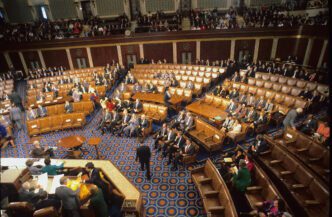Executive Summary
The Story So Far
Why This Matters
Who Thinks What?
A federal appeals court on Monday rejected President Donald Trump’s attempt to remove Lisa Cook from the Federal Reserve’s Board of Governors, marking another setback for his efforts to assert control over the central bank. The emergency ruling, which was split 2-1, found that Trump failed to provide Cook with adequate due process before her purported removal, which he sought based on allegations of mortgage fraud.
Court’s Reasoning and Legal Precedent
Judges Bradley Garcia and Michelle Childs, in the majority opinion, stated that the government did not provide Cook with “minimal process,” including notice of the allegations and a meaningful opportunity to respond. This decision upholds a district court’s preliminary injunction, which found Cook likely to succeed on claims of both substantive removal without “cause” and procedural deficiencies.
The Federal Reserve Act stipulates that presidents can only dismiss Fed governors “for cause.” Trump had argued that the unproven allegations of mortgage fraud against Cook constituted sufficient cause for her removal, despite Cook not having been charged with any wrongdoing.
Dissent and Historical Context
Judge Gregory Katsas dissented from the ruling, contending that President Trump had indeed removed Cook for cause. This legal challenge is significant, as a successful removal of a Fed governor by a president would be unprecedented in the central bank’s 111-year history.
Cook responded to Trump’s stated firing by suing him, asserting that her dismissal was based on “an unsubstantiated allegation” and violated her due process rights. White House officials and Cook’s attorneys did not immediately respond to requests for comment following the decision.
Related Developments
The appeals court’s decision arrived concurrently with the Senate’s confirmation of Stephen Miran, Trump’s nominee for a separate seat on the Fed’s Board of Governors.
Key Takeaways
The appeals court’s decision temporarily prevents President Trump from removing Governor Cook, underscoring judicial scrutiny of presidential authority over independent agencies like the Federal Reserve, particularly regarding the “for cause” removal standard and due process requirements.








